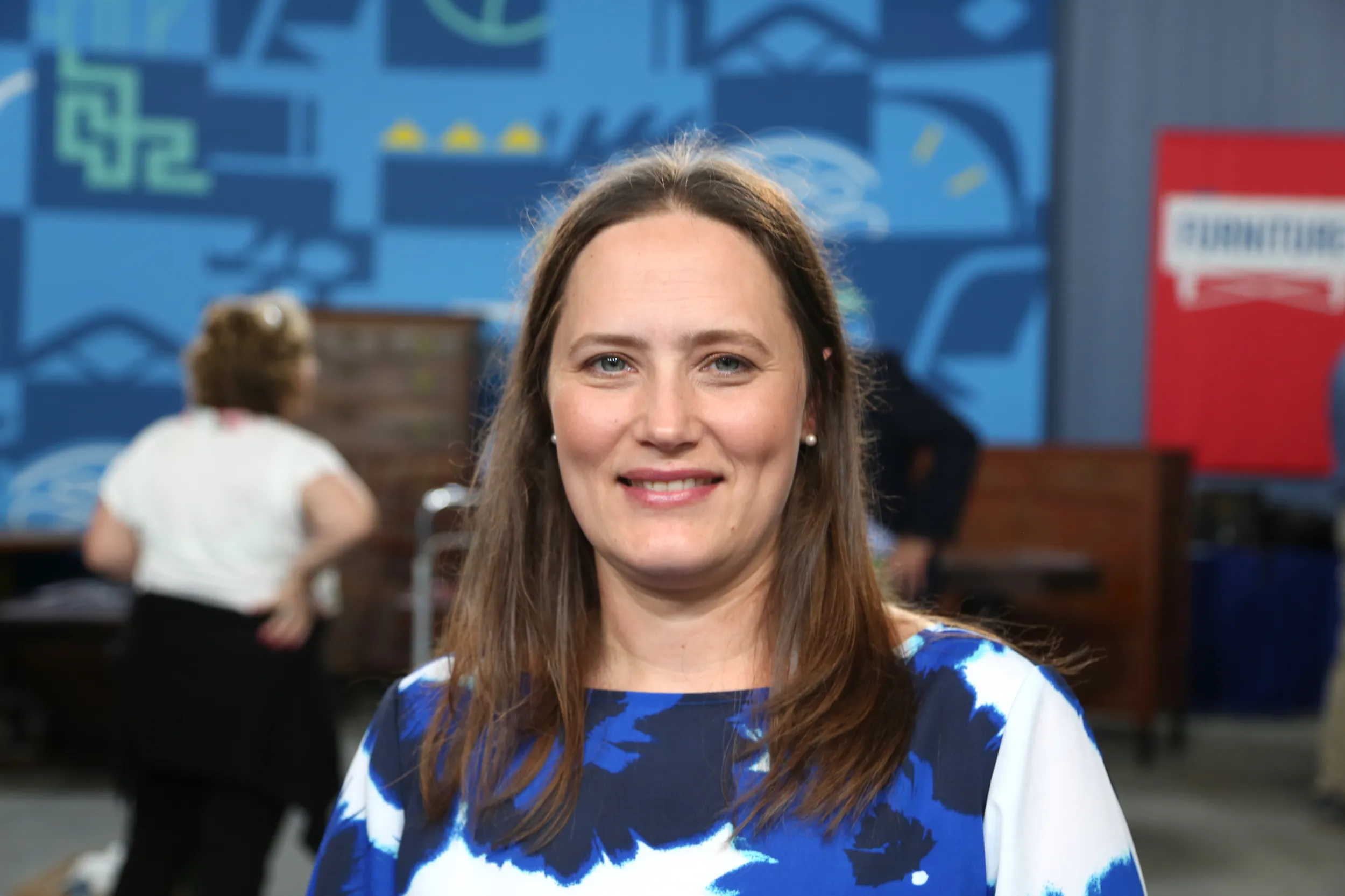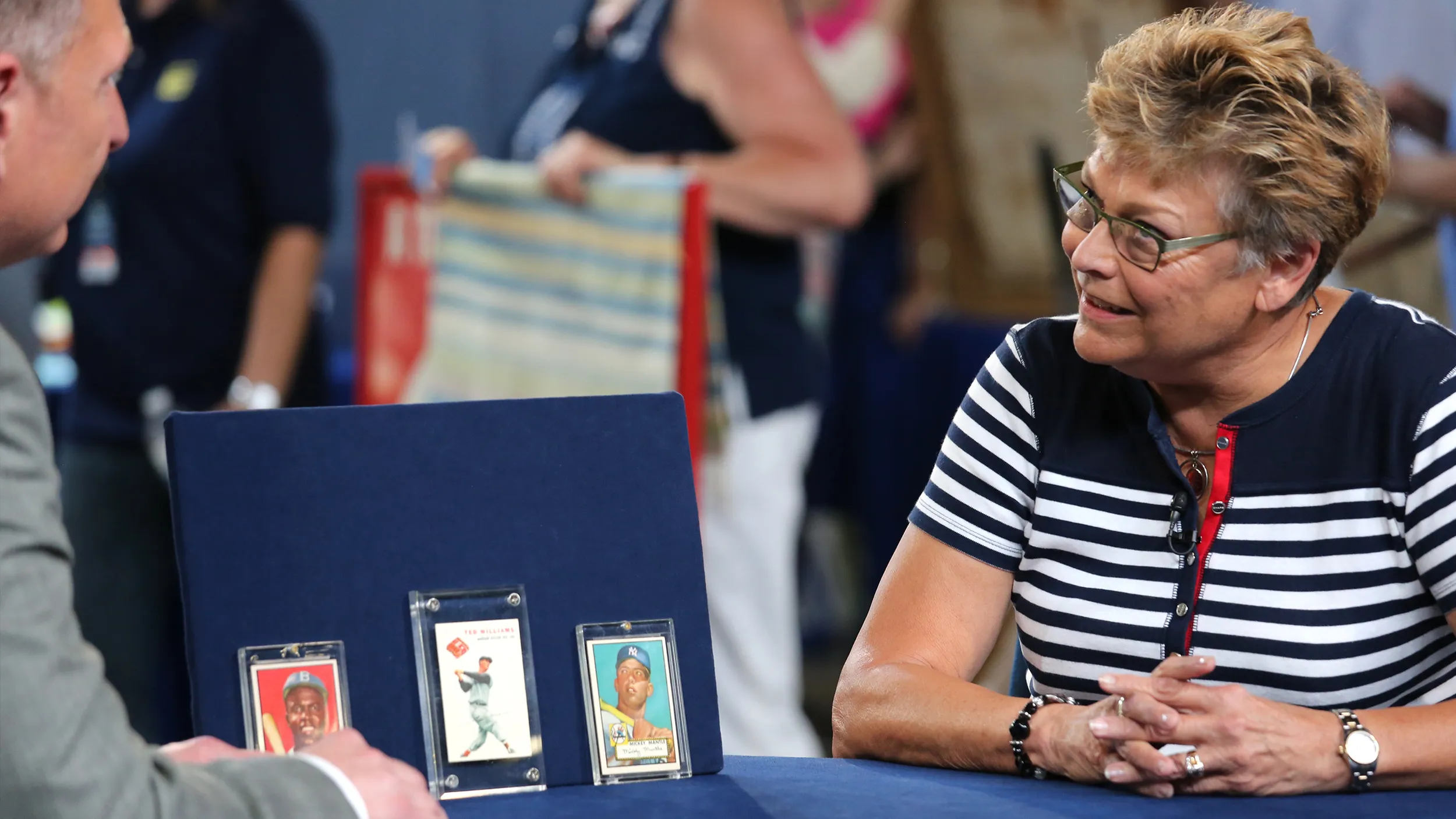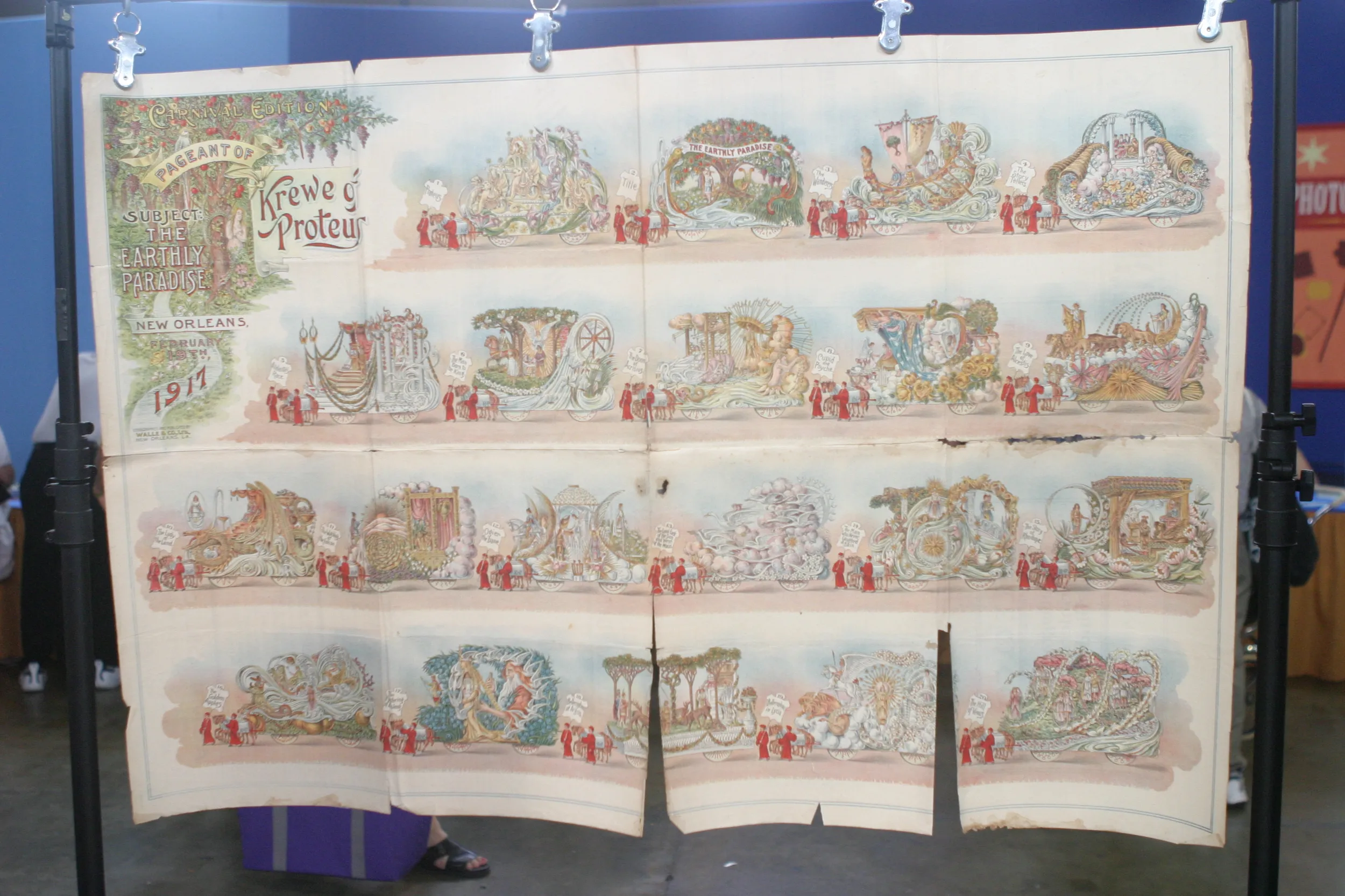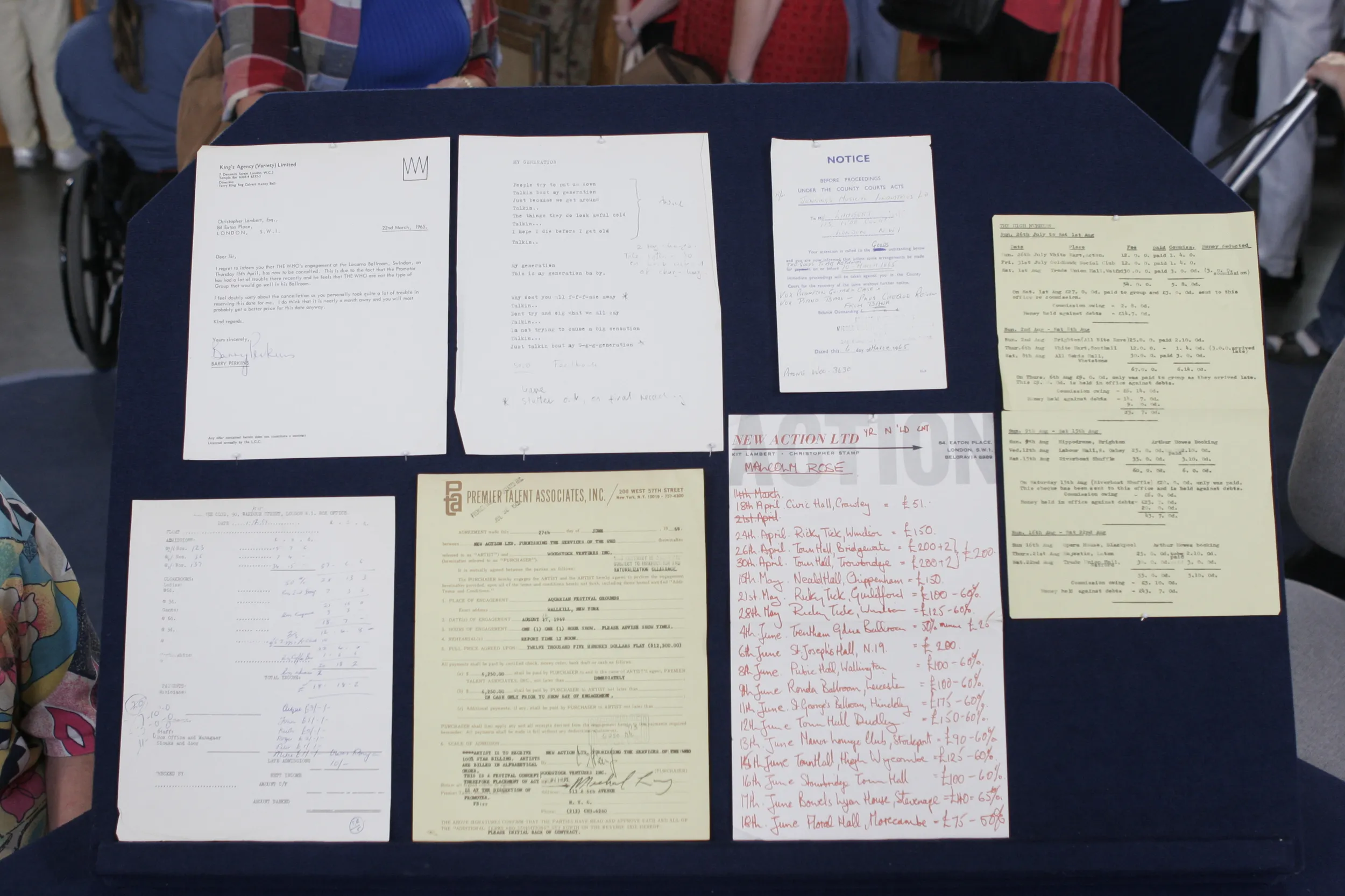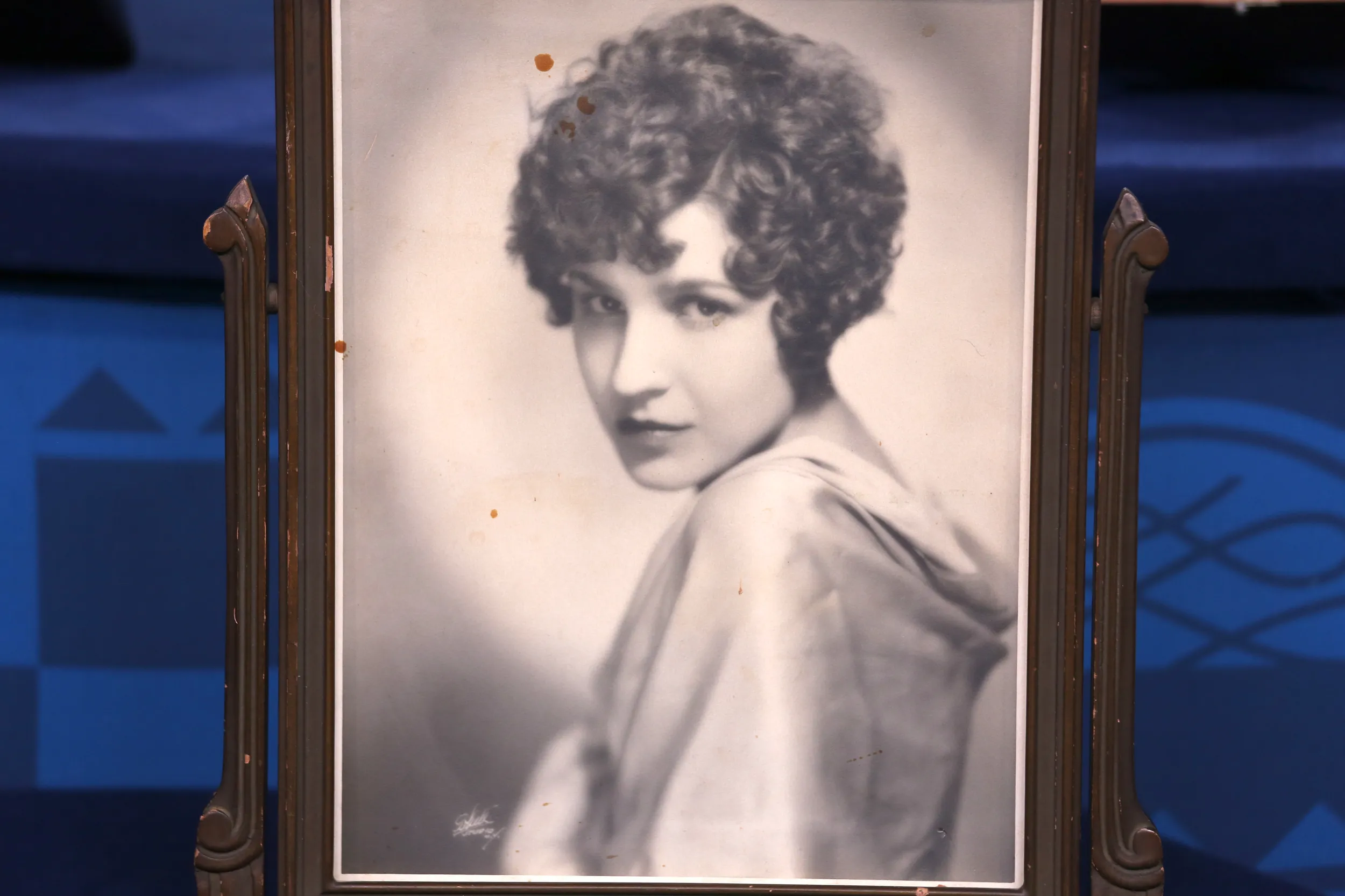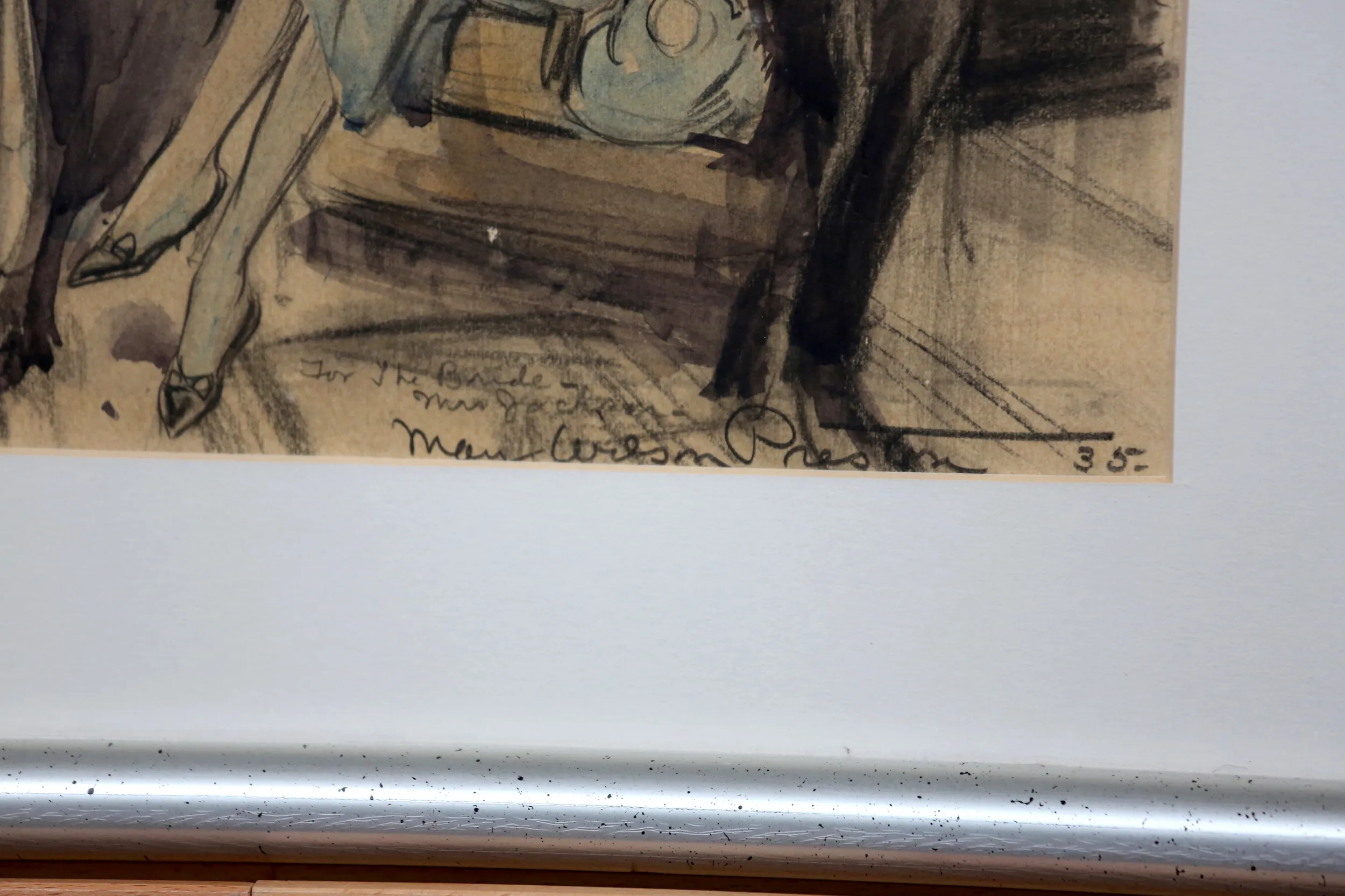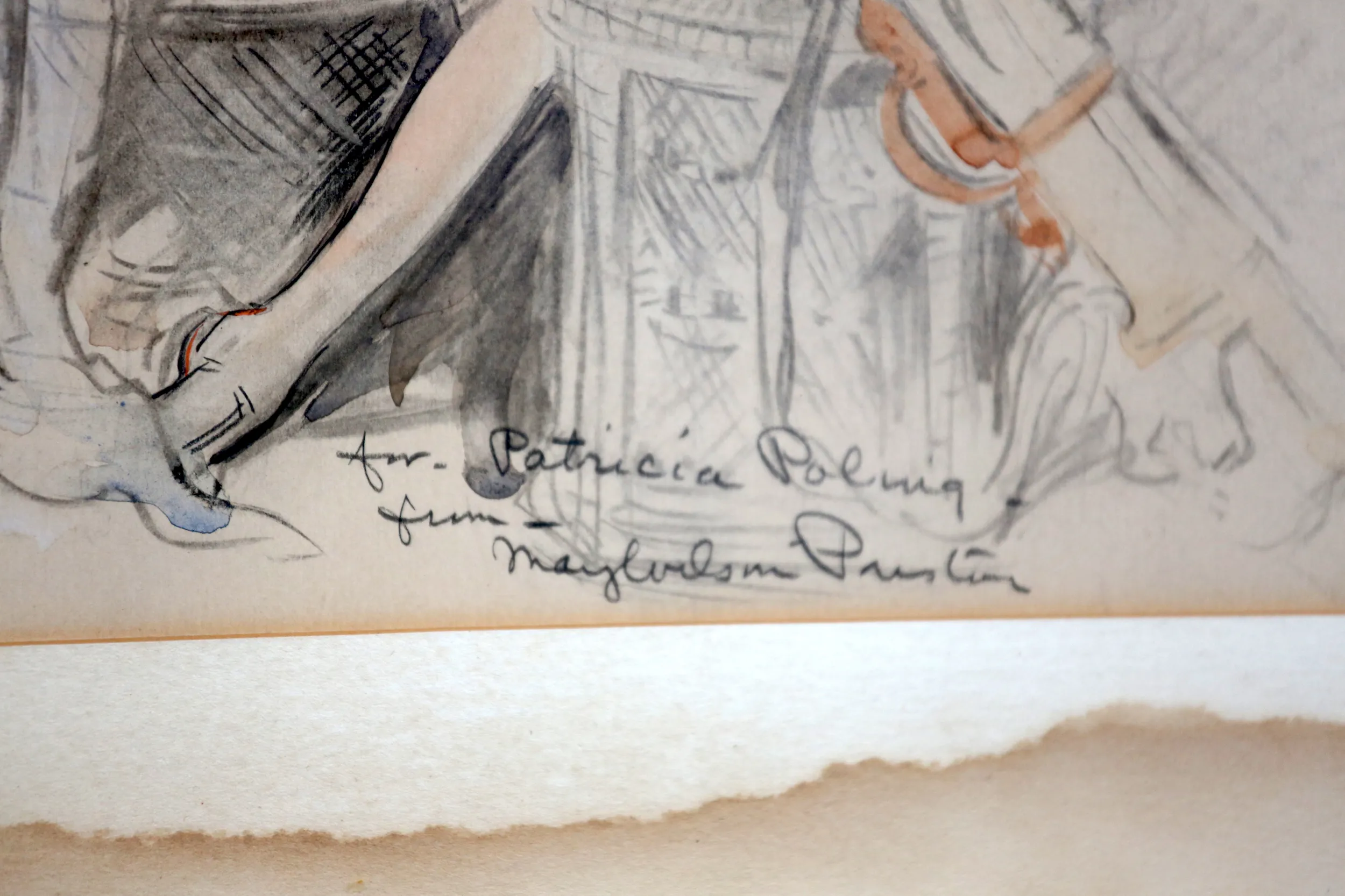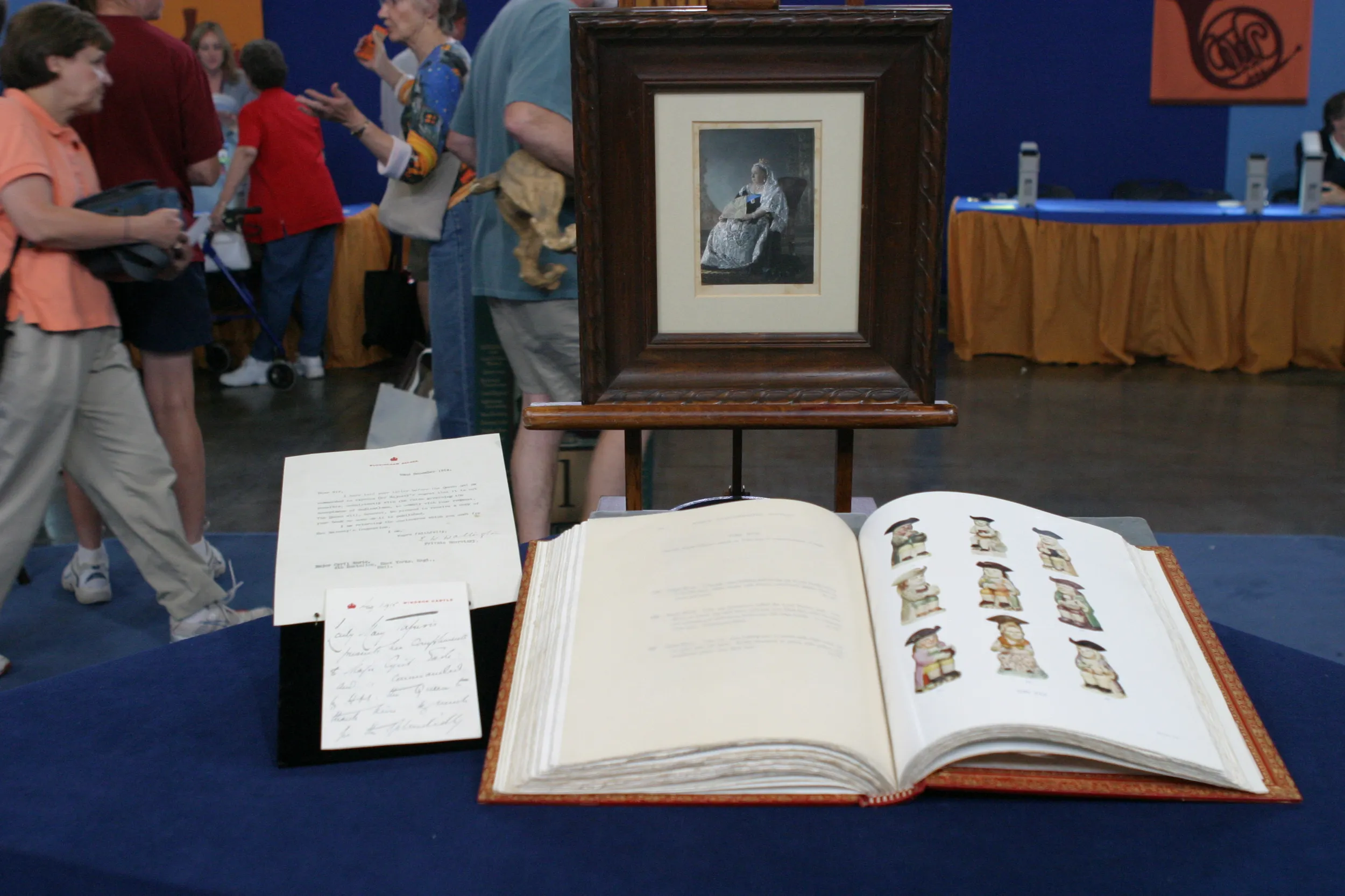GUEST: I brought two illustrations, original illustrations, that were done by May Wilson Preston of my mother. They were in magazines back in the '20s and '30s. I don't remember which magazines. My mother was a model, and this was a picture of my mother. I brought it for reference purposes to show that this picture is my mother in these two pictures here.
APPRAISER: Mm-hmm.
GUEST: And the models would be used more than once. Here, here, here, here, here, here, and here, they're all the same person.
APPRAISER: And how did your mother acquire these?
GUEST: The artist, May Wilson Preston, gave them to her. This is the first one she was given before she was married to my father. And it's signed by May Wilson Preston, and it says, "For Patricia Poling." That was my mother's maiden name. Now, on this one-- and I believe this was the last one that my mother did-- was done soon after she was married because it says, "For the bride, Mrs. Jackson." And it's signed, again, May Wilson Preston, dated '35. So I'm pretty sure that she worked for May Wilson Preston quite a bit.
APPRAISER: Okay, so she was a regular model.
GUEST: Right, she was a regular model back in the '20s and '30s.
APPRAISER: So these are two original illustrations.
GUEST: Yes.
APPRAISER: We would call them mixed media, but for the most part, they are watercolor and pencil on paper. This one just to my left, you can see the kind of sketch underneath where the artist then went in and added the watercolor. The one that's closer to you is kind of a little bit more developed, more color. And while you see the pencil underneath, you don't necessarily see that much of it because it's covered up a lot. May Wilson Preston was a very important woman illustrator in the first part of the 20th century. What I find most interesting about her is her effort to become a woman artist in a time when it wasn't that accepted. And when she had to really work hard to convince people that that was something she could do. Even as a teenager, she was interested in art, and she was a pretty good artist. And her parents didn't really want her to do that as a living. So they pushed her to go to Oberlin College. She went there for a few years. Even then her professor said to her, "You know, you really should be in art school." So she then went to the Art Students League in New York and studied with William Merritt Chase. She studied art in Paris under Whistler, and she became a very good artist. Now, her first husband died, at which point she decided that she needed to try to make a living as an artist. And she did that-- she was very successful. She was one of the best women illustrators up until about 1940-- she worked through that time. And then, another important factor is that she was one of the most important artists for the suffrage movement. So she was really committed to showing that women could make it on their own, and be successful, then also used her talents to help forward the cause of the Women's Suffrage Movement. The one closer to you has a date of 1935. The one closer to me doesn't necessarily have a date on it, but it's probably about that same period, a little bit earlier, because we know it was inscribed to your mother before she was married.
GUEST: Right.
APPRAISER: Given what we know, as two illustrations by this very important woman illustrator, I would estimate the pair at auction for $2,500 to $3,500.
GUEST: Wow.
